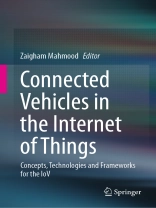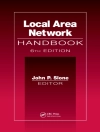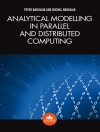This book presents an overview of the latest smart transportation systems, Io V connectivity frameworks, issues of security and safety in VANETs, future developments in the Io V, technical solutions to address key challenges, and other related topics.
A connected vehicle is a vehicle equipped with Internet access and wireless LAN, which allows the sharing of data through various devices, inside as well as outside the vehicle. The ad-hoc network of such vehicles, often referred to as VANET or the Internet of vehicles (Io V), is an application of Io T technology, and may be regarded as an integration of three types of networks: inter-vehicle, intra-vehicle, and vehicular mobile networks. VANET involves several varieties of vehicle connectivity mechanisms, including vehicle-to-infrastructure (V2I), vehicle-to-vehicle (V2V), vehicle-to-cloud (V2C), and vehicle-to-everything (V2X). According to one survey, it is expected that there will be approximately 380 million connected cars on the roads by 2020. Io V is an important aspect of the new vision for smart transportation.
The book is divided into three parts: examining the evolution of Io V (basic concepts, principles, technologies, and architectures), connectivity of vehicles in the Io T (protocols, frameworks, and methodologies), connected vehicle environments and advanced topics in VANETs (security and safety issues, autonomous operations, machine learning, sensor technology, and AI).
By providing scientific contributions and workable suggestions from researchers and practitioners in the areas of Io T, Io V, and security, this valuable reference aims to extend the body of existing knowledge.
Tabella dei contenuti
1. Connected Vehicles in the Io V: Concepts, Technologies and Architectures.- 2. Spatial Intelligence and Vehicle-to-Vehicle Communication: Topologies and Architectures.- 3. Seamless V2I Communication in Het Net: State-of-the-Art and Future Research Directions.- 4. Integrating Vehicular Technologies within the Io T Environment: A Case of Egypt.- 5. Protocols and Design Structures for Vehicular Networks.- 6. Intelligent Traffic Management Systems for Next Generation Io V in Smart City Scenario.
Circa l’autore
Professor Zaigham Mahmood is a Technology Consultant at Debesis Education, UK, and a Professor at the Shijiazhuang Tiedao University in Hebei, China. He also holds positions as Foreign Professor at NUST and IIU in Islamabad, Pakistan. He previously served as a Reader (Associate Professor) at the University of Derby, UK, and Professor Extraordinaire at the North-West University, Potchefstroom, South Africa. His many publications include the Springer titles Software Engineering in the Era of Cloud Computing; The Internet of Things in the Industrial Sector; Security, Privacy and Trust in the Io T Environment; Guide to Ambient Intelligence in the Io T Environment; Fog Computing; Smart Cities; Connected Environments for the Internet of Things; Software Project Management for Distributed Computing; Requirements Engineering for Service and Cloud Computing; Connectivity Frameworks for Smart Devices; Data Science and Big Data Computing; Cloud Computing: Challenges, Limitationsand R&D Solutions; Continued Rise of the Cloud; Cloud Computing: Methods and Practical Approaches; Software Engineering Frameworks for the Cloud Computing Paradigm; and Cloud Computing for Enterprise Architectures.












